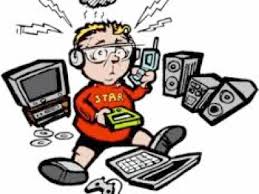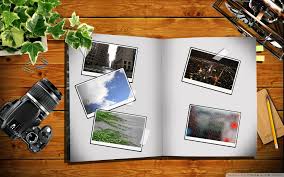Largest city in the US shows a path for an aging society. New York has long been a host and leader in supporting older adults, from being a WHO Age Friendly City, to providing Naturally Occurring Retirement Communities (NORCs) starting in 1994, home to the very first Virtual Senior Center (VSC) and other technology leadership initiatives that have been offered via SelfHelp in Queens, to Senior Planet, a technology exploration center that offers training for adults 60+. Sheer numbers of people aging, as well as many needing the skills to find and keep jobs require services like OATS and Senior Planet, or senior centers that feature technology, training in libraries, carrier stores and online sites like AARP TeK Academy.
Cities like New York can cultivate technology and services for older adults. Given the city’s scale (not to mention the number of technology organizations and NYC Broadband, among other initiatives), 1 million people aged 65+ as of 2010, this should not be a surprise. New York City has been designated an Age Friendly City by the World Health Organization – and has seen up close the issues with an aging population – only beginning to be detected in cities with far fewer older adults. Reports of cities with growing percentage of older adults (like Cleveland, population 389,500 in 2014) mask the sheer volume of New Yorkers (8.5 million) clustered in a densely populated and increasingly expensive geography. Of course, ‘older’ doesn’t mean old any more – even the word has just been redefined, with new charts spelling out the definition of the new old age.
High school kids learn how to be CNAs. Maybe you knew about this? This possibly remarkable program was featured in the Wall Street Journal this week and has been operating since 2006, training high school students how to be Certified Nursing Assistants (CNAs) in geriatric care. Remember the AARP caregiver support ratio (CSR) problem – the lack of prospective caregivers in the age range of 46-64 to care for the 80+ population. Well, it is looming just ahead for aging boomers in NYC – and only 3.05 people in the age range of 18-64 by 2030. With 112,000 available beds in nursing homes by 2010, and a population of 2.5 million individuals aged 65+ today, this high school training matches the nationwide shortage of home care, CNAs, and home health care workers – and not just in New York. For those looking at the booming home care industry as an area of investment or observing the worsening nurse shortage, consider cultivating young people to start on this career ladder at the age of 17 or 18.
Improve Aging Hack. Ideas from individuals in their 70’s and 80’s at this intriguing session focused on transportation, care, intergenerational housing, and reverse-mentoring of young to the old. The most significant aspect, and easily replicated elsewhere, was to include older adults in brainstorm about new offerings, versus simply being recipient of service ideas invented by others. Come to think of it, this should not mimic a ‘lively’ focus group -- where startup entrepreneurs offer up poorly researched "I had a grandmother" offerings. Wouldn't it be a breakthrough if each of the ideas, pitched business plans, and AARP innovation champions crafted tech offerings that were available now, clearly aimed at older adults who could benefit, like some of the aging population in New York City.
from Tips For Aging In Place https://www.ageinplacetech.com/blog/new-york-new-york-age-friendly-age-supportive-innovations
 Recent announcements, interesting offerings are worth a look. AARP recently completed the judging process for its
Recent announcements, interesting offerings are worth a look. AARP recently completed the judging process for its  Boomers and technology – it’s a given. Yesterday yet another baby boomer reporter asserted what is believed by many to be the obvious. Baby boomers will not be tech-phobic (presumably like their parents) – but will be willing and able to use the newest technology in their later years. What’s the proof? They are use it now – for example,
Boomers and technology – it’s a given. Yesterday yet another baby boomer reporter asserted what is believed by many to be the obvious. Baby boomers will not be tech-phobic (presumably like their parents) – but will be willing and able to use the newest technology in their later years. What’s the proof? They are use it now – for example,  Dial-up lives on -- and not necessarily out of preference. You may have read this last week:
Dial-up lives on -- and not necessarily out of preference. You may have read this last week:  Technology gadgets – ecosystem incompatibility. Look around a very digital home filled with parallel and incompatible ecosystems – and sigh. So many parts, so little integration – it seems vendors compete to death to NOT work together. Consider
Technology gadgets – ecosystem incompatibility. Look around a very digital home filled with parallel and incompatible ecosystems – and sigh. So many parts, so little integration – it seems vendors compete to death to NOT work together. Consider  Imagine all the non-digital photos and memorabilia. Forget Airbnb and driving for Uber. Boomers with creativity, organizational skill and some technology can follow multiple small business paths that have large emotional implications for the customer. Consider the large and small albums of photos, cassette tapes, home movies – not just from the boomers aged 51-71, but from their parents, and even some from their parents’ parents. Will anyone want it? Cynics contend that not only will the old content be lost due to disinterest, but that current content (selfies, group photos, Facebook and Instagram shots of that great dinner) will also be
Imagine all the non-digital photos and memorabilia. Forget Airbnb and driving for Uber. Boomers with creativity, organizational skill and some technology can follow multiple small business paths that have large emotional implications for the customer. Consider the large and small albums of photos, cassette tapes, home movies – not just from the boomers aged 51-71, but from their parents, and even some from their parents’ parents. Will anyone want it? Cynics contend that not only will the old content be lost due to disinterest, but that current content (selfies, group photos, Facebook and Instagram shots of that great dinner) will also be